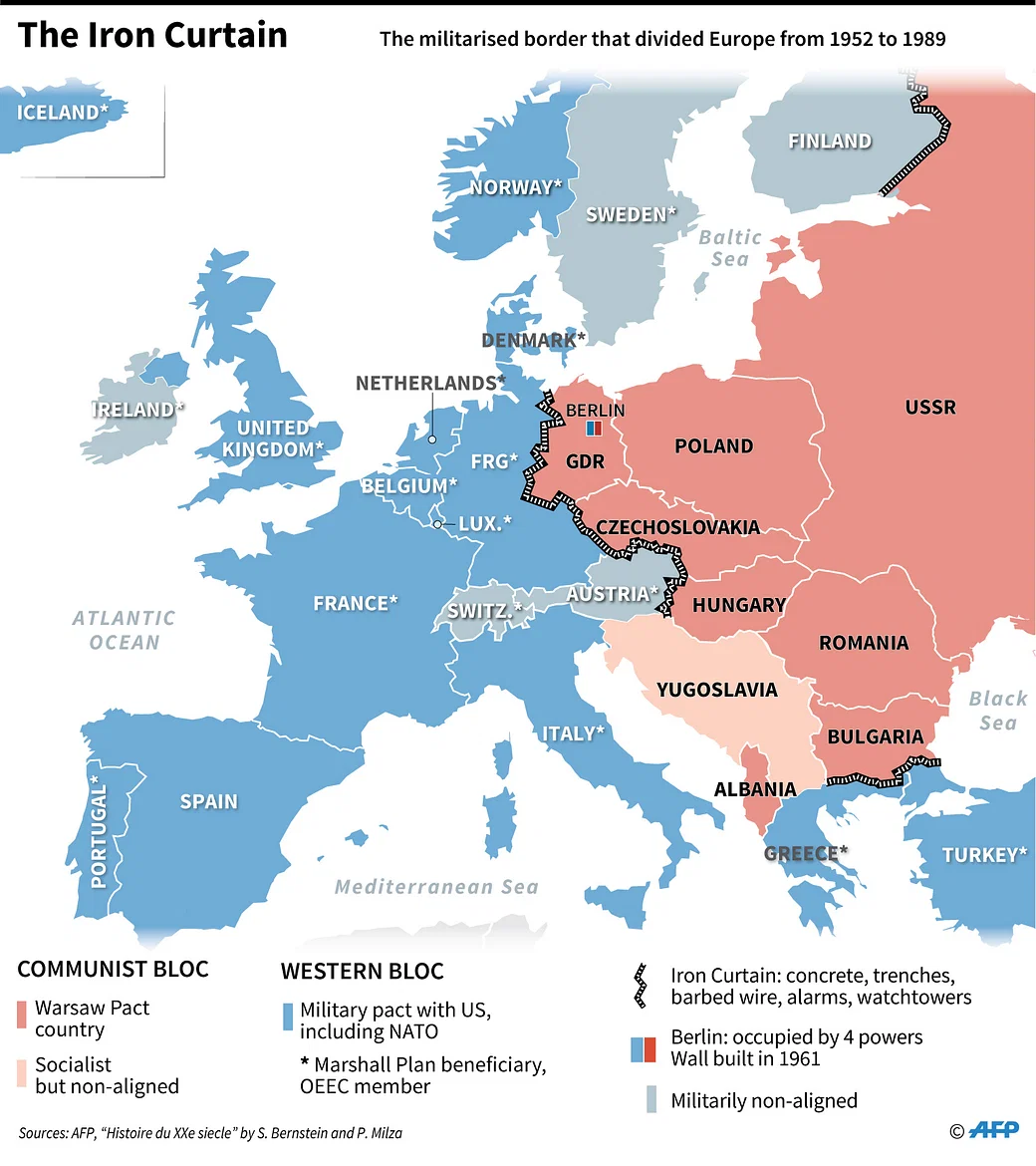Iron Curtain
The Iron Curtain refers to the political, military, and ideological barrier erected by the Soviet Union after World War II to separate itself and its satellite states in Eastern Europe from the Western world. The term symbolizes the division between communist and non-communist countries during the Cold War.
Origins of the Term[edit | edit source]
The phrase "Iron Curtain" became popular after it was used by British Prime Minister Winston Churchill in his famous 1946 speech in Fulton, Missouri, known as the "Sinews of Peace" address. He stated:
"From Stettin in the Baltic to Trieste in the Adriatic, an iron curtain has descended across the continent."
Key Features of the Iron Curtain[edit | edit source]
- Political Division: It divided Europe into two blocs:
- The Eastern Bloc (Soviet Union and its allies, including Poland, East Germany, Czechoslovakia, Hungary, and others).
- The Western Bloc (NATO countries, including the United States, United Kingdom, France, and others).
- Physical Barriers:
- The Iron Curtain was not just a metaphor but included tangible borders such as the Berlin Wall, barbed wire fences, and guard posts to prevent people from fleeing communist regimes.
- Ideological Divide:
- The Eastern Bloc promoted communism, centralized economies, and one-party rule.
- The Western Bloc embraced capitalism, democracy, and political pluralism.
Historical Context[edit | edit source]
- Post-War Europe: The division stemmed from disagreements between the Allied powers on how to manage post-war Europe, particularly Germany.
- Cold War Rivalry: The Iron Curtain was a central symbol of the Cold War, representing the deep distrust and conflict between the United States and the Soviet Union.
Fall of the Iron Curtain[edit | edit source]
The Iron Curtain began to crumble in the late 1980s due to:
- Reform movements in Eastern Europe (e.g., Poland's Solidarity movement).
- Mikhail Gorbachev's policies of glasnost (openness) and perestroika (restructuring).
- The fall of the Berlin Wall in 1989, a key event signaling the end of the division.
- The subsequent collapse of communist regimes across Eastern Europe and the dissolution of the Soviet Union in 1991.
The Iron Curtain remains a powerful symbol of the Cold War era and the division of Europe during the mid-20th century.
